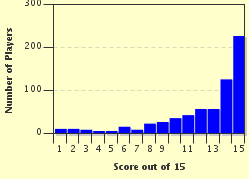Quiz Answer Key and Fun Facts
1. Australians are called Aussies and New Zealanders are called Kiwis. Which word in the second half of the NATO alphabet, often used to signify a portion of the North American population, is suggested by the flags in this picture?
2. Lovers of the Greek language and/or estuarine geography would know the NATO alphabet word this photo represents. Which word is it?
3. The NATO alphabet has a little bit of style and panache added to it by the inclusion of this South American dance. Which dramatic dance can be found in the second half of the alphabet?
4. There is one city in the NATO alphabet which can be found in Argentina, Iran, Paraguay, Peru, Portugal, Sweden and the United States. If that geographic clue doesn't help you, have a look at the beans in the photo. They are pronounced differently to the city, but have the same spelling. Which city is it?
5. This word is associated with the same country as haggis and kilts. Which beverage is used in the second half of the NATO alphabet?
6. The bird in the photo is a beautiful peacock. He's allegedly proud of his beauty, but he is also proud to be the national bird of the only country in the NATO alphabet. Which country would that be?
7. In the photo you'll see a medical image of a lower leg. Which LETTER of the alphabet is represented by the picture?
8. This adorable kitten weighs approximately two pounds, four ounces. Translating that into a metric measurement and taking only the prefix of that measurement, will give you a word found in the first half of the NATO alphabet. Which word is that?
9. This is where it all begins. Which word in the NATO alphabet is depicted in this photograph?
10. The thrill of crossing the finishing line ahead of all the others doesn't need an explanation. Which word in the second half of the NATO alphabet is synonymous with the winner of a race?
11. Fear not, sports fans. The NATO alphabet has included a sport in its list. Which sport, found in the first half of the alphabet, is suggested by the picture?
12. Some might call the man in the right of the photo 'Dad'. Some might call him 'Father'. Which synonym of 'dad' and 'father' can be found in the second half of the NATO alphabet?
13. The NATO alphabet has several words which have their origins in Greek. Here's a word found in the first half of the NATO alphabet which came to us from Greek mythology. Which Greek mythological figure has her name perpetuated in the NATO alphabet?
14. As the NATO alphabet is used by military forces around the world, it seems appropriate that this word is included. Which word found in the second half of the alphabet is illustrated in this photo?
15. It's been a long day at the keyboard and now you need somewhere to rest your weary head. Which type of accommodation, found in the first third of the NATO alphabet as well as by a road, is suggested by the photo?
Source: Author
Tizzabelle
This quiz was reviewed by FunTrivia editor
looney_tunes before going online.
Any errors found in FunTrivia content are routinely corrected through our feedback system.

